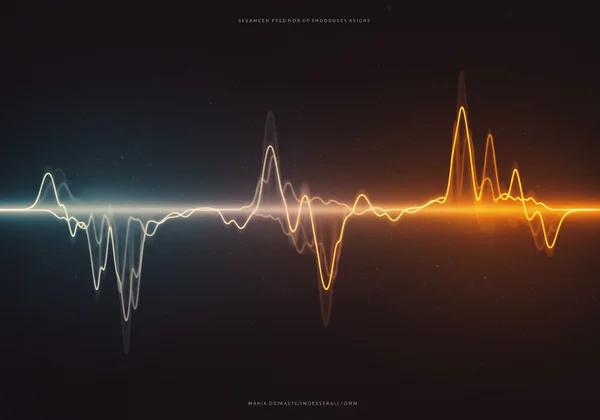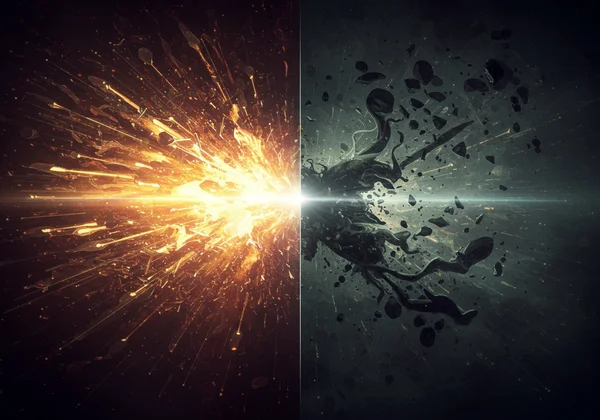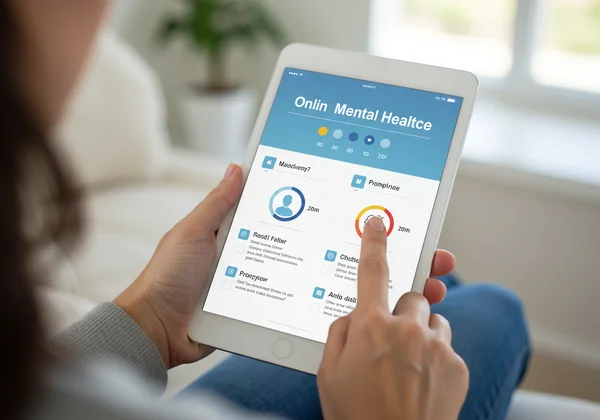Bipolar Test vs. Depression: Symptoms, Misdiagnosis & Accurate Assessment
Experiencing intense emotional shifts can be confusing, leaving you to wonder: Is this depression, or could it be something more? Understanding the differences between bipolar disorder and depression is crucial, especially as misdiagnosis is common. Many ask, "Am I bipolar or just moody?" This guide aims to bring clarity, helping you recognize the distinct patterns of each condition. Armed with this knowledge, you can take a powerful first step toward seeking the right support and advocating for an accurate understanding of your mental health. If you're ready to start exploring these patterns, our tools can help you organize your thoughts and get some clarity.
Understanding Major Depressive Disorder (MDD)
When people talk about "depression," they are most often referring to Major Depressive Disorder (MDD), also known as unipolar depression. The term "unipolar" is key—it means the mood swings happen in one direction: down. While everyone feels sad from time to time, MDD is characterized by a persistent and debilitating low that significantly impacts daily life. It’s more than just a bad week; it's a heavy fog that won't lift.
Living with MDD can feel like more than just sadness; it encompasses a much wider range of emotional and physical symptoms. The challenge of living with untreated MDD can be immense, affecting everything from personal relationships to professional performance. Understanding its core features is the first step in differentiating it from other conditions, especially when considering the possibility of misdiagnosis bipolar.
What are the Core Symptoms of Unipolar Depression?
A diagnosis of MDD is typically made when someone experiences at least two weeks of a depressed mood or a loss of interest or pleasure in nearly all activities, as outlined by authoritative sources like the American Psychiatric Association (APA). This is often accompanied by several other signs. One of the hallmark symptoms is persistent sadness, an unshakable feeling of emptiness or hopelessness that colors your entire world.
Another core symptom is anhedonia, which is the inability to feel pleasure from activities you once enjoyed, whether it's a hobby, spending time with friends, or even eating. Other common symptoms of unipolar depression include:
-
Significant changes in appetite or weight (either loss or gain).
-
Sleep disturbances, such as insomnia or sleeping too much.
-
Constant fatigue or a profound lack of energy.
-
Feelings of worthlessness or excessive guilt.
-
Difficulty concentrating, remembering things, or making decisions.

The Consistent Nature of Depressive Episodes
The defining feature of unipolar depression is the consistency of its low mood. While the intensity can vary, the emotional state remains at the depressive "pole." There are no episodes of elevated mood, euphoria, or unusually high energy. The experience is one of a sustained downward shift from your usual self.
This consistency is the primary point of contrast with bipolar disorder. For those with MDD, the goal of treatment is often to lift this persistent low mood back to a baseline level of functioning. Without the "up" periods, the diagnostic picture can seem straightforward, but it’s the absence of these highs that truly defines it as unipolar.
Decoding Bipolar Disorder: Beyond Just Depression
Bipolar disorder, as detailed by institutions like the National Institute of Mental Health (NIMH), is a complex mood disorder defined by its cyclical nature. People with this condition experience intense emotional states that occur in distinct periods called "mood episodes." These episodes are categorized as manic/hypomanic (the "highs") and depressive (the "lows"). Because the depressive episodes can look identical to MDD, misdiagnosis bipolar is incredibly common. Many individuals are first diagnosed with depression because they only seek help during their low periods.

The key to distinguishing bipolar disorder from unipolar depression lies in identifying the presence of manic or hypomanic episodes. These are not just moments of happiness or productivity; they are a marked departure from your normal self, bringing significant shifts in energy, thought, and behavior. Recognizing these highs is essential for an accurate diagnosis.
The Defining Role of Manic and Hypomanic Episodes
The experience of mania and hypomania is the true hallmark of bipolar disorder. Mania is the more severe form, a period of abnormally elevated or irritable mood and increased energy lasting at least one week, which causes severe impairment in daily functioning and may require hospitalization. Symptoms can include:
- Inflated self-esteem or grandiosity.
- A drastically reduced need for sleep (e.g., feeling rested after only 3 hours).
- Being more talkative than usual or feeling pressure to keep talking.
- Racing thoughts or a flight of ideas.
- Extreme distractibility.
- Engaging in risky behaviors with painful consequences (e.g., spending sprees, reckless driving).
Hypomania is a less severe version. It involves the same types of symptoms, but the episode is shorter (at least four consecutive days) and less impairing. While others may notice the change, it doesn't typically lead to major problems at work or in relationships. For many with Bipolar II disorder, hypomania can even feel productive or creative, making it harder to recognize as a symptom.

Bipolar Depression: A Distinct Experience
While the lows in bipolar disorder meet the criteria for a major depressive episode, they often present with atypical features that can offer clues. Compared to unipolar depression, bipolar depression is more likely to involve overwhelming fatigue, a feeling of being slowed down physically, and an increased need for sleep. This is sometimes described as a "leaden paralysis," where moving your limbs feels like a monumental effort.
Individuals may also experience more mood reactivity, meaning their mood can briefly lift in response to positive events, which is less common in severe MDD. These subtle differences in the depressive experience can be an important piece of the diagnostic puzzle. Understanding these nuances is a key part of seeing the full picture of your mood patterns.
The Cyclical Pattern of Bipolar Moods
Unlike the persistent low of MDD, bipolar disorder is defined by its cycles. A person with this condition will cycle between periods of depression, periods of mania or hypomania, and periods of normal mood (euthymia). The frequency and duration of these cycles vary widely from person to person. Some may have long stretches of wellness between episodes, while others may experience rapid cycling.
This pattern of moving between poles—from a deeply depressed state to an elevated mood—is what makes bipolar disorder fundamentally different. Tracking these mood shifts over time is one of the most effective ways to work toward an accurate diagnosis. If you suspect your moods follow this kind of pattern, it may be helpful to explore your mood patterns with a structured tool.
Why Accurate Diagnosis Matters for Your Well-being
Receiving an accurate diagnosis is not about getting a label; it's about getting the right help. The treatment approaches for unipolar depression and bipolar disorder are significantly different. An incorrect diagnosis can lead to ineffective treatment plans that not only fail to help but can sometimes make things worse. This is why advocating for a comprehensive evaluation is so important for your long-term well-being.
The Risks of Misdiagnosis and Ineffective Treatment
The most significant risk of misdiagnosing bipolar disorder as depression is related to medication. Standard antidepressants, often the first line of treatment for MDD, can be problematic for someone with bipolar disorder. In some cases, these medications can trigger a manic or hypomanic episode or even accelerate the frequency of mood cycling.
This can create a confusing and distressing cycle where the treatment itself seems to be causing more instability. Beyond medication, the therapeutic strategies also differ. Therapy for bipolar disorder often focuses on recognizing episode triggers, managing the highs and lows, and maintaining stability, which are different goals than those for treating a persistent low. Experiencing these psychomotor changes can be a sign that a different approach is needed.
Seeking a Comprehensive Professional Assessment
The gold standard for diagnosing any mood disorder is a comprehensive evaluation by a qualified mental health professional, such as a psychiatrist or psychologist. There is no blood test or brain scan for bipolar disorder. The diagnosis is made through a careful and thorough discussion of your symptoms, personal history, and family history.
A clinician will ask detailed questions about your mood episodes, both the highs and the lows. They will want to understand their duration, severity, and impact on your life. Providing them with clear information is vital, and preparing for this conversation can make a huge difference. Tools based on recognized clinical guidelines, like the Mood Disorder Questionnaire (MDQ), can help you organize your experiences.
How Our Bipolar Test Can Support Your Journey
While nothing can replace a professional diagnosis, a preliminary online screening can be an invaluable first step. It can help you organize your thoughts and determine if your symptoms warrant a deeper conversation with a professional. Our free and confidential bipolar test is designed to do just that.
Based on the clinically recognized MDQ, our test guides you through questions about your mood and energy levels. Upon completion, you receive instant insights into your patterns. For a more in-depth look, you can opt for a personalized AI report that provides detailed analysis and actionable guidance. This can be a powerful tool to bring to your doctor to facilitate a more productive conversation. If you are seeking clarity, why not take the free bipolar test today?

Your Path to Understanding and Support
Understanding the nuanced differences between bipolar disorder and major depression is a powerful act of self-advocacy. Recognizing that the defining feature of bipolar disorder is the presence of manic or hypomanic "highs"—not just the depressive "lows"—is the key to unlocking an accurate understanding of your experiences. This clarity empowers you to seek the right kind of support and embark on a more effective path to wellness.
Your journey to mental well-being is unique, and taking the time to explore your symptoms is a sign of strength. If this article has resonated with you, consider taking the next step. Our free online bipolar test can provide initial insights to help you make sense of your mood patterns. We encourage you to start your journey to clarity and share your results with a healthcare professional.
Frequently Asked Questions About Bipolar vs. Depression
What is commonly mistaken for bipolar disorder?
Major Depressive Disorder (MDD) is the most common misdiagnosis. However, other conditions like Attention-Deficit/Hyperactivity Disorder (ADHD), with its symptoms of impulsivity and hyperactivity, and Borderline Personality Disorder (BPD), characterized by intense emotional instability, can also share overlapping symptoms and lead to confusion.
Am I bipolar or just moody?
While everyone experiences mood swings, the shifts in bipolar disorder are distinct episodes that represent a significant change from your baseline self. These episodes of depression and mania/hypomania last for days or weeks and cause noticeable impairment in your daily life, relationships, or work—a key difference from regular moodiness.
How do you get tested for bipolar disorder?
There is no single blood test or scan for a diagnosis. A psychiatrist or psychologist will conduct a thorough clinical evaluation, discussing your symptom history, experiences, and family history. An online bipolar test can serve as a helpful preliminary screening tool to help you organize your thoughts before speaking with a professional.
What is the difference between Bipolar 1 and Bipolar 2?
The main difference lies in the severity of the "highs." To be diagnosed with Bipolar 1, you must have experienced at least one full manic episode, which is severe and causes significant impairment. For a Bipolar 2 diagnosis, you must have experienced at least one hypomanic episode (a less severe high) and at least one major depressive episode.
Disclaimer: This content is for informational purposes only and does not constitute medical advice, diagnosis, or treatment. Always seek the advice of your physician or another qualified health provider with any questions you may have regarding a medical condition.